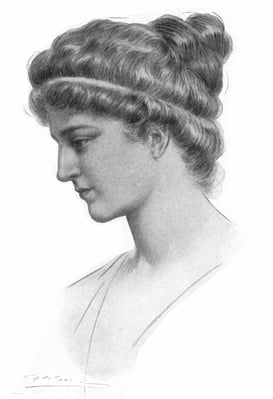To coincide with 100 years of (some) women getting the vote in the UK, we've been celebrating the #Vote100 milestone by publishing a series of blog posts that feature truly remarkable lives and inventions of women in STEM. Our last in a series of four focuses on Hypatia...
Humanity owes a great debt of gratitude to ancient philosophers and inventors, from the mathematicians of Ancient Greece and the Mediterranean all the way to the wise men of the East. But alongside Plato, Pythagoras or Confucius, there were equally distinguished women who were true trailblazers for their era. Hypatia (born around 355 AD – died March 415 AD) was one such extraordinary lady.

Hypatia was born in Alexandria, Egypt, which was then part of the Eastern Roman Empire. She was the daughter of Theon of Alexandria, a mathematician and astronomer credited with having preserved Euclid’s masterpiece Elements, to which he added extensive philosophical commentaries.
Theon made sure that, unlike other women of her time, Hypatia received a well-rounded education. He encouraged her to continue her studies and he taught her mathematics, philosophy, and astronomy. He also trained her in the art of rhetoric, which was at that time a privilege exclusively reserved to men. He also believed in physical health and fitness and devised a routine involving running, hiking, horseback riding, rowing, and swimming to keep Hypatia physically fit.
To broaden her knowledge further, he sent her to Italy and to Athens. In Athens, she studied under Plutarch of Athens and his daughter Asclepigenia.
Upon her return, Hypatia started working in the fields of mathematics, astronomy, physics and philosophy. She is credited with commentaries on the geometrical work Conics, authored by Apollonius of Perga and on Arithmetica by Diophantus of Alexandria, who is often credited as the father of algebra.
Although Hypatia lived in a world of ideas, she was very much affected by the turbulent social and religious environment that Alexandria was becoming. Although she herself was a pagan, she displayed tolerance towards all other religions and taught many Christian students, including a future Christian bishop. She was a mathematics and philosophy instructor at the Neoplatonist school in Alexandria and, in the year 400, she became the director of the school.
Known as a wise councillor, Hypatia advised Orestes, the Roman prefect of Alexandria who was in the midst of a feud with Cyril, the bishop of the city. Unfortunately for Hypatia, she fell victim to rumours accusing her of preventing Orestes from reconciling with Cyril.
In March 415 AD, she was murdered by a mob of Christian monks known as the parabani under the leadership of a lector named Peter. Hypatia's death shocked the empire and transformed her into a martyr. Later, during the Middle Ages, Hypatia was co-opted as a symbol of Christian Virtue, despite her pagan beliefs. During the Age of Enlightenment, she became a symbol of opposition to Catholicism. In the twentieth century, Hypatia’s heritage was hijacked again and she was seen as an icon for women’s rights and feminism.
But the truth is, without ever knowing it, Hypatia paved the way for many women to follow their dreams and become educated in fields traditionally only available to men. For this reason, we can safely say that she was a precursor to all modern women making their mark in STEM today.
Read our previous post on Hedy Lamarr - more than just a pretty face! Or Dame Jocelyn Bell Burnell - the girl that reached for the stars.